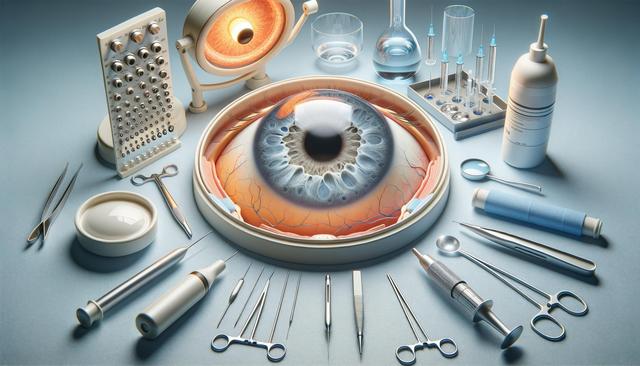
More People Are Considering Cataract Procedures
Understanding Cataracts and Their Impact
Cataracts are a common eye condition, particularly among older adults, that cause the lens of the eye to become cloudy, leading to a gradual decline in vision. This cloudiness can affect daily activities such as reading, driving, and recognizing faces. While cataracts develop slowly and are initially manageable with stronger lighting or glasses, they eventually require surgical intervention to restore clear vision. The growing awareness of these symptoms and their impact on quality of life is a key reason why more people are considering cataract procedures today.
Increased life expectancy and a desire to maintain an active lifestyle have also contributed to this trend. People are no longer willing to accept declining eyesight as an inevitable part of aging. Instead, they are seeking out medical solutions that align with their goals for independence and wellbeing. As a result, cataract surgery is becoming a more routine and widely accepted procedure around the world.
How Cataract Surgery Works
Cataract surgery is a sophisticated yet commonly performed outpatient procedure that involves removing the clouded lens and replacing it with a clear artificial lens, known as an intraocular lens (IOL). This lens remains in the eye permanently and restores vision with minimal discomfort or recovery time. The entire process typically takes less than an hour and is performed under local anesthesia.
There are different types of cataract procedures and lens options available, depending on a patient’s vision needs:
- Standard monofocal lenses, which provide clear distance vision
- Multifocal or accommodating lenses, which offer a broader range of vision
- Toric lenses, designed to correct astigmatism
The choice of lens and surgical technique is determined through a comprehensive eye exam and consultation with an ophthalmologist. With technological advancements, the precision and safety of cataract surgery have significantly improved, making it more appealing to a wider demographic.
What to Expect Before and After the Procedure
Preparing for cataract surgery involves several steps to ensure the best outcome. Before the procedure, patients undergo a series of eye measurements and health evaluations. These assessments help the surgeon select the appropriate lens and tailor the surgical plan to the patient’s specific needs.
Post-surgery, most individuals experience noticeable improvements in vision within a few days. While full recovery may take several weeks, the initial results are often immediate and encouraging. Patients are usually advised to avoid strenuous activities, rubbing their eyes, or exposure to dust and water during the healing process.
Common post-operative guidelines include:
- Using prescribed eye drops to prevent infection and inflammation
- Wearing a protective eye shield while sleeping
- Attending follow-up appointments to monitor healing
With proper care, complications are rare, and the majority of patients regain clearer, sharper vision, enhancing their ability to perform everyday tasks independently.
Why More People Are Opting for Cataract Procedures
The rising number of individuals considering cataract procedures is driven by a combination of medical, social, and personal factors. Advancements in surgical methods and lens technology have significantly improved patient outcomes, making the procedure more appealing. Additionally, the reduced downtime and high success rate contribute to growing confidence in the treatment among both patients and healthcare providers.
Other motivating factors include:
- Greater access to eye care and diagnostic services
- Increased health literacy and awareness about vision issues
- Desire to maintain independence and prevent accidents caused by poor vision
Younger adults with early-onset cataracts, often due to genetics or medical conditions like diabetes, are also seeking surgical solutions earlier, reflecting a shift in how cataracts are perceived and addressed.
Considerations Before Choosing Cataract Surgery
While cataract surgery is generally safe and effective, it’s important for individuals to make informed decisions. A thorough consultation with an eye care professional is essential to understand the potential benefits and risks. Factors such as overall eye health, lifestyle needs, and financial considerations should all be part of the decision-making process.
Some questions to discuss with a healthcare provider include:
- What type of lens implant is suitable for my vision goals?
- What are the potential risks or complications?
- How will the surgery affect my daily routine and recovery time?
- Is the procedure covered by my health insurance?
Taking the time to explore these aspects ensures that patients have realistic expectations and are better prepared for the procedure and its outcomes. With the growing interest in vision care and the available resources, more people are empowered to take proactive steps toward improving their vision and quality of life.
Final Thoughts: Embracing Clearer Vision
As the demand for cataract procedures grows, it’s evident that people are prioritizing their vision health and overall quality of life more than ever before. The availability of advanced technology, combined with increased awareness, has made cataract surgery a practical and accessible option for many. Whether motivated by the desire to maintain independence, improve safety, or simply enjoy life with clarity, more individuals are turning to this procedure as a reliable solution.
By understanding the process, benefits, and considerations involved, patients can make informed choices that align with their personal goals. For anyone experiencing the symptoms of cataracts, consulting with a qualified eye care professional is a valuable first step toward clearer, more vibrant vision.


